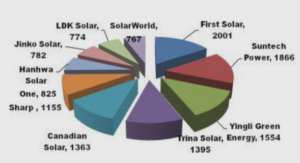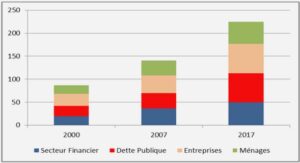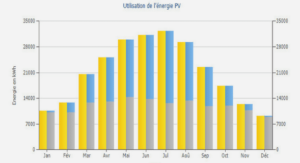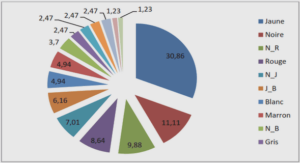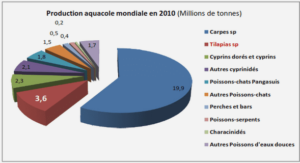There are two parts in this thesis. The first part of this work has been carried out under the supervision of Prof. Nicole El Karoui and concerns a financial point of view of the study of long-term interest rates . The second one, under the supervision of Prof. Laurent Decreusefond, concerns the stochastic analysis of determinantal point processes. Both parts are self-contained and can be read independently .
The first part of this thesis concerns a financial point of view of the modelling of long term interest rates. For the financing of ecological projects reducing global warming, longevity questions or any other investment with a long term impact, it is necessary to model accurately long term interest rates. But for longer maturities (20 years and more), the interest rate market becomes highly illiquid and standard interest rates models cannot be easily extended. There is however an abundant economic literature on longterm policy-making. In the first chapter, we present the point of view of the economists on this subject. It is based on a representative agent maximizing his utility from consumption. The derivation of the yield curve for far-distant maturities is induced from the maximization of the representative agent’s utility function from consumption. The formula linking the yield curve and the consumption of the agent is called the Ramsey Rule. Then we discuss the various extensions of the Ramsey Rule, and the economic assumptions it is based on .
Our work is a financial point of view on long term interest rates: it is inspired by the economic literature on long-term policy-making but we take into account the existence of a financial market. This is the purpose of Chapter 2. A first way to achieve this is to consider a complete market where an agent maximizes the expected utility of his consumption and terminal wealth under a budget constraint. Our contribution is to examine the classical utility maximization techniques from the point of view of interest rates. We show that classical expected utility maximization techniques lead again to the Ramsey Rule. Then we underline the role of the Growth Optional Portfolio, which has been studied in detail by Heath and Platen [PH06]. The Growth Optimal Portfolio is a particularly robust portfolio over long periods of time and therefore it is a useful tool for the study long term interest rates. The Growth Optimal portfolio can be used as a numeraire for pricing zero coupons.
The expressions of zero-coupon bond prices or of the yield curve hold for a finite horizon T. We choose T ≤ T H, we choose a finite horizon. For the moment, in this work we have not considered the case where T → +∞. In Economics, this case is often mentioned. But in finance, the density of the risk-neutral probability tends to zero when T → +∞. But throughout this work, we remain in the case of a long term but finite horizon.
In the third Chapter, our framework is extended to the case of an incomplete financial market (where incompleteness comes from portfolio contraints). Then the pricing probability is not universal and might depend on the maturity and the utility function. We examine the consequences of incompleteness on the term structure of long term interest rates. Of course in this case, an important issue is how to price zero-coupons in this framework? It is shown that the Ramsey Rule holds if we adopt a pricing rule linked to the marginal utility (Davis prices). In this Chapter, we present a dual formulation of the expected utility maximization problem more suitable. We underline the fact that the optimal dual process depends on y, the wealth in the economy.
But the most important result of this chapter is a new point of view on consumption. We interpret the consumption process as a certain quantity of wealth, or supplies. In this framework, the agent non longer invests and consumes. Instead, he agent invests in the financial market and makes supplies. He will use these supplies only if an unpredictable event (or default) happens before maturity. The mathematical formulation of these ideas introduces a new market which we call the G-market, with new utility functions, which are stochastic. These new results involve progessive filtration enlargement, this is why we treat them in this chapter. These results are also used in the next chapter. Thus, this chapter proposes a new point of view of the consumption process, which is a key quantity in the expression of the yield curve via the Ramsey Rule.
The topic of the second part of this thesis is the stochastic analysis of determinantal point processes. Determinantal and permanental processes are point processes with a correlation function given by a determinant or a permanent. Their atoms exhibit mutual attraction or repulsion, thus these processes are very far from the uncorrelated situation encountered in Poisson models. However, a part of our work is inspired by the method of Albeverio et al. for establishing integration by parts formulas for Poisson measures.
We establish first a quasi-invariance result : we show that if atoms locations are perturbed along a vector field, the resulting process is still a determinantal (respectively permanental) process, the law of which is absolutely continuous with respect to the original distribution. Based on this formula, following Bismut approach of Malliavin calculus, we give an integration by parts formula. It is then possible to generalize this formula for a larger family of point processes called alpha determinantal processes (where the parameter α measures the strength of the repusion between points). Then we study a method for the simulation of determinantal point processes in R n , based on an acception-rejection method and different from the one of Hough et al.
1 Long-term interest rates |

